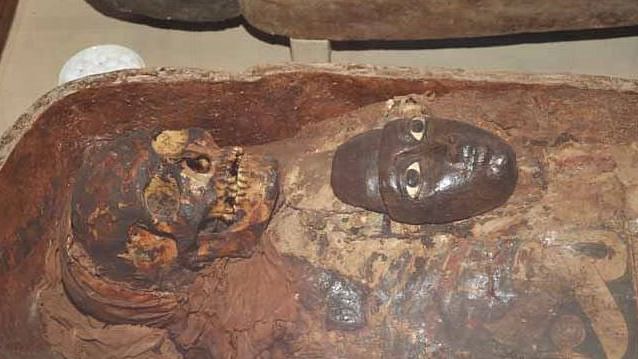Egypt Keen to Help India Restore 4,000-Year-Old Mummy in Kolkata
Egypt’s envoy to India has proposed an initiative to restore the mummies in India, including the one in Kolkata.

Egypt is keen to help India restore a 4,000-year-old mummy-in-residence which has been "lying in a bad condition" at the Indian Museum in Kolkata, one of Asia's oldest, but is a star attraction for its visitors.
Hatem Tageldin, Egypt's Ambassador to India, who had visited the museum's Egyptian gallery in February 2016, has proposed an initiative to assist in the restoration of the mummies in India, including the one in Kolkata.
The Bad Condition of Mummies
The envoy has also expressed a desire to meet the director-in-charge of the Indian Museum.
"We hope to hear from them on our proposal. We need details and documents about the mummy... which family it belongs to, how it arrived in India, etc., so we can help in restoring it," he said, adding the cooperation on offer was sent through official channels and was extended for all mummies in India. "We heard there are six or seven mummies in India."
However, according to Indian Museum authorities, a "climate-controlled air-conditioned environment" is now in place for the exhibit.
The History of the Mummy
The mummy's arrival in India, reportedly from "tombs of the kings at Gourvah" (in Egypt) to Mumbai via sea and then to Kolkata, can be traced back to British India of the 1800s. It arrived in Calcutta in 1882 and was mentioned in a listing of the attractions of the museum published the next year.
It was originally encased in a wooden frame and covered with another frame on which the face of the mummy was carved.
In an insulated glass cabinet at the museum, it now lies nestled in the bottom half of the encasing, while the top cover is removed and laid by its side, for visibility. A write-up about the mummy at the museum says:
Digital records of the Journal of the Asiatic Society of Bengal (Vol III, dated 1834) say the mummy was a gift to the Society, which founded the museum, from a British officer in the same year. "A letter from Lieutenant E.C. Archbold of the Bengal Light Cavalry, dated Bombay July 5, 1834, announced that he had forwarded to the Secretary (James Prinsep), as a present to the Asiatic Society of Bengal, an Egyptian Mummy."
"The mummy was obtained with some difficulty from the tombs of the kings at Gourvah," the Journal reports.
"The native crew on board the ship which brought Lieutenant A. from Mocha, having objected to receive the mummy with his baggage, he had been under the necessity of requesting one of the officers of the Sloop of War Coote to bring it onward to Bombay, whence it will be forwarded to Calcutta by the earliest opportunity."
This is noted in the book Jadughar (the popular name of the museum) launched on the occasion of 200 years of the Indian Museum in 2014.
(This article has been published in an arrangement with IANS)
(At The Quint, we are answerable only to our audience. Play an active role in shaping our journalism by becoming a member. Because the truth is worth it.)